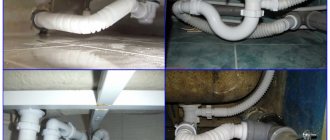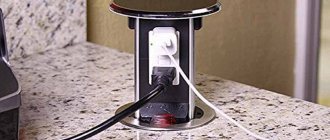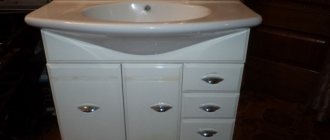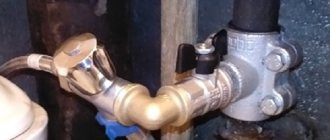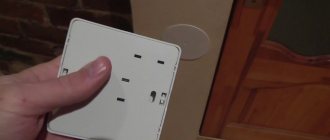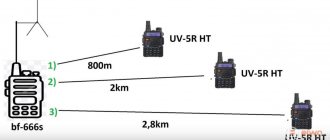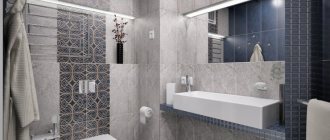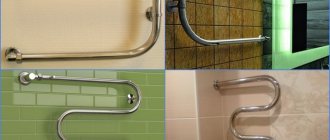Peculiarities
Infrared heaters have a rather interesting operating principle. They heat not the air itself, but objects located around them due to infrared radiation. As a result, they become warm, releasing part of the thermal energy into the atmosphere - the room becomes warm and comfortable. Let's look at the main features of IR heaters:
The most striking drawback of these heaters is the high electricity consumption, which is typical for any, even the most economical electrical appliance.
- Correct heat distribution. If you install traditional radiators indoors, it will be cool near the floors and hot near the ceilings. In the case of IR heaters, the floors will be warm, since they will be heated by IR radiation;
- When installed correctly, they do not cause harm to human health - if this equipment is installed correctly in its normal place, then it will not have a negative effect on the body (in particular, there will be no headaches);
- Fast heating of rooms - they warm up noticeably faster than traditional radiators;
- Almost complete silence - only gas appliances make noise (and even then they are practically inaudible);
- Can work in rooms with high humidity levels;
- Available for use in outdoor conditions, creating a comfortable environment in open areas;
- No negative impact on the environment.
Installing an IR heater in a living room will create a warm atmosphere in which it is pleasant not only to relax, but also to work.
Infrared devices
The wall-mounted infrared heater is represented by the largest number of modifications. In the house you can install:
- Classic heater.
- Heater-picture.
- Ceramic infrared panel.
Any of these subspecies works the same. It creates infrared rays that spread throughout the room and heat objects rather than the air. Also, these devices give off heat by convection, because their bodies also heat up. However, such heat transfer is small.
A classic infrared heater has the following structure:
- Durable housing.
- Reflective element.
- Heating element, which consists of silicon and aluminum.
The latter radiates heat in all directions. As a result, half of the rays enter the room immediately, and the other moves inside the housing, is reflected from a special panel and then enters the room.
The strong sealed case has special devices for hanging on brackets. It has a fairly large depth and is clearly visible on the wall.
The picture heater looks inconspicuous. This infrared device in the form of a picture is a “sandwich” of two films and a carbon fiber placed between them. Its thickness is almost 1.5 mm. There is also a fuse. The picture-shaped device is often called a film heater.
Does it make sense to get involved with infrared heaters?
There are approximately the same number of fans and ardent critics of heating residential premises using infrared radiation installations. It is worth recognizing that, despite the fierce criticism of fans of water heating, the idea of using electric infrared heaters is becoming increasingly popular.
Radiant electric heaters have their own rather interesting advantages:
- Versatility. The infrared heater can be installed on any surface, at any angle, without restrictions on height and method of fastening;
- Locality of heating. An infrared emitter allows you to organize heating of part of the room, even if it is not possible to limit the loss of warm air;
- Easy to install. It is enough to correctly lay the electrical wiring to the places where the heaters are installed, connect the input to the house and a meter designed for increased power consumption of electricity;
- Low inertia of infrared heaters. Heating of the room stops 10 minutes after the electric heater is turned off;
- Possibility of smooth adjustment and precise dosage of room heating.
For your information! Due to the very small thermal inertia of infrared heaters, the air temperature in the room can be adjusted with an accuracy of half a degree; it is enough to install digital or even mechanical thermostats.
Of course, similar options for maintaining the air temperature in a house or apartment at a given level can be implemented using heated floors or electric convectors, but in both cases, good results can only be achieved in closed rooms, when there are no drafts or passage rooms.
Practice once again proves that the use of radiant devices makes it possible to heat a room no less efficiently than when using convectors or water and oil radiators
In this case, it is important to choose the right scheme and method of installing an infrared heater
Conventional electric water-oil heaters and radiators, regardless of the installation scheme, heat the air by convection:
- Most of the heat-transfer surface is covered with a casing or screen to improve, according to the developers, the flow of air to the spirals or tubular sections;
- In some designs, convection electric heaters simply unsuccessfully copy the shape of cast-iron central heating radiators;
- Such heater designs are designed for installation in window sill niches, where warm air mixes with the flow of cold air from the ventilation valve and spreads well throughout the room. In all other cases, the efficiency and economy of air heaters is significantly lower than that of infrared heaters.
Important! There are quite a few comparison tests that measure heating performance, but the most reliable data shows a difference between infrared heaters and convectors by almost 18%. In addition, infrared heaters are practically insensitive to the position of the housing, whereas for a convector, manufacturers require installation only in a vertical position, with an inclination angle of at least 4-7 o
In addition, infrared heaters are practically insensitive to the position of the housing, whereas for a convector, manufacturers require installation only in a vertical position, with an inclination angle of at least 4-7 degrees.
Low temperature infrared heaters
The most frequently criticized disadvantage of an infrared heater is related to the high temperature of the radiating surface. Most often, a spiral or ceramic panel heats up to 300-500 o C, which can cause drying of the air in the room.
Relatively recently, so-called cold or low-temperature heaters began to be used for heating. New infrared heaters look like ordinary square facing slabs measuring 60 cm or 50 cm. The smooth heating surface is made of polymer ceramics; on the reverse side there may be a protective grille or a plastic panel covering the heating element.
Such heaters heat up to a temperature of 90-95 o C, so even with prolonged contact with fabric, curtains or furniture there is no damage. Installation of such an infrared heater can be done almost anywhere, but preferably no closer than 40-50 cm to open parts of the body, you can use the advice in the video:
The most important thing is that the room heating efficiency of such a heater is approximately 20-25% higher than in comparison with vaunted convectors and oil radiators.
How to regulate loads?
Figure 3. Design of an infrared lamp heater.
The load regulation process is automated. It allows you to control the load on gas thermostats. This is a very important point and it is recommended to choose this installation option. The fact is that, provided that the room has sufficiently high-quality thermal insulation, the thermostat will need to work no more than 20 minutes per hour to maintain the temperature at the required level. And this allows you to reduce the load by 3 or more times, which is quite an important factor. It is advisable to choose this option. The main material for such a connection is the box in which the wires are laid. If you are going to install hidden wiring in the wall, you will also need corrugation.
To connect infrared heaters, wires with a cross section of 1.5-2.5 are used. The specific value depends on the load level on the thermostat. Experts recommend connecting a common machine before starting installation. When working, do not forget to follow safety precautions.
If you have chosen a gas infrared heater, do not forget about the specific operation of this equipment. The thermostat has its own characteristics, so when installing the device you must follow all the important rules. You can see the diagram of an infrared lamp heater in the following image: Fig. 3.
Infrared heaters have the ability to create an atmosphere of comfort, spending the very minimum of your labor and money. Being at the same time compact, safe and, most importantly, efficient, they are used for heating various rooms. Installation of infrared heaters is not an abstruse or highly complex process; even a novice master can do it. So, you can look at the models of infrared ceiling heaters on mklimata.ru - this review will look at the subtleties of installing it yourself.
IR heating has the following advantages:
- Allows you to save money, especially in the form of additional heat
- They don’t “eat up” oxygen
- Absolutely safe for human health when used correctly
- When using the ceiling option, they do not take up space in the house and are inaccessible to children
- When switched on, they do not make noise and additionally illuminate the room.
- Built-in thermostats on many models maintain the desired air temperature
- By turning off the IR heater, the heat collected in the room from objects heated by the device remains for some time.
- They are resistant to moisture and can be installed in a convenient place - a bathtub, terrace or gazebo.
The disadvantage is the relatively high price of this type of heating.
How to properly connect an IR heater
A regular single-phase network is suitable for connection, unless, of course, it is a high-power industrial design. The infrared heater is connected using a thermostat.
The thermostat is guided by the temperature in the space, thereby providing and maintaining the desired temperature regime. Equipped with a mechanical control method. The thermocouple immediately disconnects the heater from the network as soon as the temperature reaches the desired limit. When the air cools, the contact will close and the flow of electricity will be restored.
We install a separate thermostat for each room in the house to regulate the temperature separately. In the absence of regulators, excess electricity will be consumed and the atmosphere will not be comfortable enough.
After installation, you will need to connect the IR heater, for which you need to use a wire that is resistant to heavy loads, for example, VVG 2*2.5. It should be laid inside the walls or ceiling, after which it should be masked with a layer of plaster.
Since the power of the devices is not the highest, a VVG 2*1.5 wire could be suitable, which is more applicable to the installation of lighting devices. For power loads, this option has a small cross-section.
There is no need to be intimidated by the connection diagrams for infrared heaters - simply connect the cable from one or a group of devices to the location of the thermostat, and then to the nearest junction box.
Please note that the thermostat breaks one phase, so no additional cable or conductors are needed.
With a heater power of 3 kW or more, a separate solid line to the distribution panel and equipment with an RCD automatic device will help you.
The aesthetic issue - how to avoid them coming into view - is solved by carefully finishing them inside the walls and floors. If this is not possible, equip everything with plastic cable ducts, and for non-residential premises you can use corrugated cables.
Installing such heaters is not difficult. It is much more difficult to correctly perform installation calculations so that the use of the device is safe.
Here you will learn:
Infrared heaters can create a comfortable atmosphere with minimal labor and financial costs. They are compact, safe and efficient, and can be used in premises for various purposes. Installing an IR heater is not difficult; even a novice craftsman who already knows how to hold tools in his hands can handle it. In this review we will look at all the intricacies of installation work.
Place and method of connecting the thermostat
As you can see, there is nothing complicated in the connection diagram of the temperature controller: connect the power wire and power to the IR heater to it.
Connecting a thermostat to an infrared heater can be done in a variety of ways. For example, a thermostat can be placed directly in the wall - on one side the electrical network is connected to it, and on the other side the heaters themselves are connected (in the example, “Peony” ceiling infrared heaters are used). Temperature sensors can be built-in or remote. Thanks to remote sensors, more accurate control of room temperature is achieved. They are also used to perform multi-zone monitoring.
The connection diagram of the thermostat to the infrared heater is simple: network - regulator itself - heater. The most ordinary ceiling chandeliers are connected in the same way, only instead of a switch we use a temperature controller. Multichannel regulators have several outputs - one for each heater or group of devices.
Infrared heater for ceilings and walls: pros and cons
To decide whether to opt for infrared heaters, let’s determine all the pros and cons, which are presented in the table:
| Behind | Against |
| Fast heating of the room. | When turned off, the room temperature drops quickly. |
| High fire safety. | Possibility of drying solid objects. |
| Service life from 20 to 50 years. | Uneven heating due to directional action of IR. |
| Precise temperature control. | Negative effects on humans with prolonged intense exposure (dry skin, dehydration). |
| The emitters destroy viruses harmful to humans. | A bright light that stands out strongly in dark rooms. |
| Quiet operation. | Strong heating of the bulb and reflector in high-temperature IR (dangerous for children and animals that may touch the device). |
| High efficiency. |
Working while people are away
If you choose an infrared heater correctly, then thanks to its performance characteristics it will allow you to efficiently heat the desired areas in the room and provide the opportunity to save significantly. But if you intend to leave the IR heater on while leaving on business, it is best to choose products with a metal plate for radiation
Attention: Quartz heaters should not be left running unattended for a long period of time.
This is due to the fact that quartz models of IR heaters have a spiral in the lamp, which heats up to a temperature of more than 500 degrees and can cause a fire. If a metal plate is installed in the heaters, then its heating temperature does not exceed 200 degrees. If there is a device to protect against overheating, they can be left on without fear.
When connecting IR heaters, external thermostats, fuses and differential devices should be used as protection equipment. Only if they are available can you guarantee that connecting the heater will be safe.
This is interesting: How to warm up concrete in winter?
Principle of operation and varieties
A characteristic feature of such products is the release of heat, which helps to heat various surfaces - walls, floors, ceilings, etc. It should be noted that the air is heated partially, because the main flux of radiation is directed towards objects, which subsequently give off heat from themselves.
Infrared radiation is not afraid of wind, drafts and can warm you up even on a windy day
The device consists of a reflector and an emitter. The latter is responsible for the transmission of radiation during the heating process. The reflective element is a reflector, which is made from heat-resistant materials with high reflectivity. The heating elements can be:
Infrared equipment differs in several ways: purpose, installation method, energy source. According to the last parameter, they are divided into stationary and mobile. Devices can be for domestic and industrial needs.
According to energy sources, all heaters are divided into several types:
- Electrical. The most popular type of devices that are installed in any premises. A mandatory element in the system is a mirror reflector for transmitting radiation in the required direction.
- Gas. Best suited for open areas or industrial buildings. Due to their high power, they are rarely found in residential areas. The fuel is a gas-air mixture.
- Diesel. They are in demand in rooms where wiring is weak. Such devices are often found on the street or in garages. The device does not require chimneys; cleaning is carried out through several filters.
- Film - often used in residential areas.
Features of infrared heaters
The infrared heater can be attached to a wooden surface
Infrared heaters are a unique opportunity to make life comfortable in summer cottages, apartments, and private houses. Today, such devices are also in great demand in offices and other similar institutions where a regulating thermal system is needed.
Can an infrared heater be used as a single heating system? A very interesting question that can definitely be answered in the affirmative. This type of heating is perfectly suitable both for the main heating system and as an addition. The difference will be expressed solely in the calculated power.
This type of heating has a number of advantages:
- It does not require huge expenditures of either money or labor to install powerful structures.
- Characterized by silent operation and automation.
- Guarantees safety and environmental cleanliness.
- Provides the possibility of zone heating. At the same time, it can maintain different temperatures in two different zones.
The device can be installed for zone heating
The infrared heater is easy to install, attach and use. It begins to perform its functions as quickly as possible, providing a high level of comfort in its area of operation. A huge advantage of using this type of heating is a small percentage reduction in moisture in the room. That is, there is no problem of dry air.
To get the maximum benefit from using such a useful installation, its installation should be carried out correctly.
This is interesting: Types of heated floors - overview of features and main advantages
Required tools and materials
In order to quickly and easily install an infrared heater on the ceiling, you will need the following tools:
- Drill or screwdriver (drill holes for fastenings).
- Pliers (for shortening wires).
- Indicator screwdriver (determine phase and zero).
- Metal detector (optional, used to search for wiring and metal objects in the wall, so as not to accidentally hit these objects when drilling holes. You can make your own metal detector from improvised means.
- A simple pencil and a construction tape (mark the mounting points on the wall).
- Demountable electrical plug.
- Three-core copper cable, cross-section 2.5 mm2.
- Wall mounts (purchased as needed, as only ceiling brackets are included in the kit).
Having collected all the necessary list of materials and tools, you can proceed to mounting and connecting the heater..
Where and how to install an IR heater?
The location of the infrared heater depends on its type and heating plan. It can be installed on the ceiling, on the wall, with or without a slope.
Safety precautions
Remember that installing IR heaters is working with electricity
Therefore, it is important to maintain maximum caution and follow safety rules:
- Never install the heater near fire hazards.
- Electrical wiring must be laid on a non-combustible base.
- The fastening elements must not touch the heating element.
- Do not install devices with a power of more than 800 watts for a residential building or apartment.
- Do not connect the heater to the network until installation is complete.
To use the heater more efficiently in your home, place it near materials that have high heat absorption rates, such as wood, carpets, and stone walls. U
You should not install the heater near reflective surfaces, this will reduce the efficiency of the device.
The mounting surface must be strong enough, as some heaters can weigh up to 28 kg, although many, of course, are lighter.
Location and height from the floor
Room Recommended location Bedroom Area above the head of the bed so that at least ⅔ of the bed is exposed to IR radiation. Kitchen It is recommended to install the heater so that its rays are directed towards the window, the place where cold air flows from the street into the room. Bathroom On the ceiling, if this is the only source of heat in the room, or opposite a small area where people most often visit, if the IR heater is considered as an additional source of heat. Hallway On the ceiling, pointing down to the floor. It stays warm and dries very quickly. The same goes for shoes - they also dry quickly and remain warm.
However, it is important to clean it so as not to dry it out, thereby spoiling it.
Next Post
This is interesting: How to properly install a hob in a countertop: lay out point by point
Detailed instructions for DIY installation and connection
You can enjoy all the above benefits only by installing the device correctly. The work is carried out in 5 stages and requires strict adherence to the instructions.
Preparatory stage
First, you need a set of tools so that you don’t have to be distracted during installation. Must be present:
- Roulette.
- Pyrometer.
- Screwdriver.
- Screwdriver.
- Drill (perforator).
- Pliers.
Where and how to install an IR heater?
At this stage, the location of the infrared heater is determined. It can be installed on a wall, ceiling, or with a slope.
IR with a power of up to 800 W is installed in residential premises. If we are talking about public buildings, then the power starts from 1.5 kW.
The surface must be strong to support a load of 20-30 kg.
Location and height from the floor
IR is recommended to be installed next to surfaces that absorb heat.
Wood, carpets, and stone surfaces work well. Reflective surfaces should be avoided, since when using the device the owner will receive a minimal effect. Electrical wiring must be laid on a non-combustible base. The location of the heater largely depends on the specifics of the premises. There is an optimal scheme for placing IR in residential buildings. It looks like this:
- A pyrometer can measure the coldest place that needs heating. In the case of installing several heaters at once, it is required.
- The height from the floor should be 1.5 m in residential areas. If a person spends a lot of time under the heater, the value should start from 1.8 m.
- If the installation of a high-temperature infrared heater is carried out in public buildings, offices, then the distance should be 2 m.
Installation of the device
You can do the installation yourself without spending a penny. The only difficulty is that it requires certain skills and knowledge, as well as knowledge of the installation process.
Progress:
- Determine the mounting height from the ceiling and floor using a tape measure.
- Tighten the bolts or drill a hole with a drill (perforator) if the wall is concrete. It is important that the distance between the attachment points is the same.
- Insert dowels into the drilled holes.
- Install fasteners.
- Secure the device into the fixing holes.
Electrical connection
To save energy and provide a comfortable temperature, the infrared heater is mounted together with a thermostat.
The device automatically turns off the IR when the room reaches the specified temperature. As soon as the air in the room cools down, the thermostat turns on the IR. Connecting to the network together with the thermostat takes place in 4 stages:
- Attach the thermostat to the wall at a height of 1.4 m from the floor near the infrared heater.
- Select a wire that is resistant to heavy loads. It must be laid inside the walls and ceiling from the IR to the thermostat.
- The wire is masked with plaster or special boxes.
- The heater wiring is switched parallel to the main line.
Connection diagram for several heaters via a thermostat
The connection involves connecting the cables of several devices to the thermostat. Next, the thermostat is connected to the junction box.
How to install an infrared heater yourself
Infrared panels are gaining more and more popularity every year. They are easy to use and provide quick heating of the room, and the built-in thermostat allows you to set the desired heating temperature in a few clicks. Moreover, installing infrared heaters yourself is quick and easy if you follow the instructions. Other advantages of this equipment include:
- long service life;
- noiselessness;
- safety;
- spot heating;
- Possibility of use in open space.
It is not surprising that many people are interested in installing infrared heaters themselves. This process does not require special skills and takes from 25 minutes to an hour and a half.
Preparation
In order for the installation of an infrared heater to go as expected, you must have the following tools:
If necessary, more complex equipment can be used. For example, if you are interested in installing several infrared heaters with your own hands, it is best to use a pyrometer for calculations. It will allow you to determine the warmest and coldest places in the room. Based on the information received, you will select the optimal location for each device.
Safety precautions
There is a set of measures that will prevent accidents both during installation and during operation:
- Do not install IR panels near flammable or explosive objects;
Electrical cables must be laid on a non-combustible base;
The fastener should not touch the heating element;
The height at which the panel should hang is 2.5-3.5 meters;
For a house or apartment, devices with a power of no more than 800 watts are purchased.
The device must not be turned on until installation is complete. The device must have an appropriate degree of protection if the panel is installed in a bathhouse or sauna. If all these rules are followed, the installation of an infrared heater will be quick and easy.
Installation recommendations
When installing infrared heaters with your own hands, the distance between the ceiling and the body must be at least 3 millimeters. In country houses, the panels are taken outside to heat the external space, for example, a summer kitchen. In such cases, to increase efficiency, it is necessary to place thermal insulation material or foil under the housing.
To make the installation of an infrared heater as simple as possible, it is better to place the panel with the connector facing the wall. Most models have self-clamping contacts. The delivery package includes elements for attaching the device to the ceiling.
The installation process includes the following steps:
- remove the device from the packaging and place it on any flat surface with the heating plate down;
- mark the installation location and make several holes;
- screw in the screw rings;
- hang the chains, adjusting the height (if necessary).
As you can see, installing infrared heaters with your own hands is not a particularly difficult process. The panels can also be mounted on the wall, but the heating effect will be significantly less.
Installation of different models of IR heaters:
Network connection
The device is connected to a thermostat, which will maintain the desired temperature. This is done through three terminals: “ground”, “phase” and “zero”. Accordingly, the supply cable must be three-core. As an option, you can use PVA 3x1.5.
The ends of the cable are connected to the terminals. The polarity is indicated on the ends of the wires. After the device is installed and connected, it is advisable to wipe the panel with an alcohol solution before turning it on.
Connecting multiple devices
If you are interested in installing infrared heaters with your own hands in large rooms, then you need to take into account that you will need several devices. To ensure coordinated operation, all panels are connected to one thermostat. This will allow you to effectively regulate the temperature throughout the facility.
Security measures
Please note that installation of IR panels involves working with electricity. It is very important to exercise extreme caution and follow safety rules:
- It is prohibited to install an infrared heater on the ceiling if fire hazardous objects are located nearby.
- Electrical wiring must be located on a non-combustible base.
- Fasteners must not come into contact with the heating element.
- It is not recommended to install devices with a power of more than 800 W in residential premises.
- The device must not be connected to the network until installation work is completed.
For more efficient operation of the device, it is recommended to place the device near objects that absorb heat well: stone walls, wood, carpets, etc.
Experts do not advise installing the heater near reflective surfaces, because this reduces the efficiency of the product. The mounting surface must be strong, because some structures weigh about 30 kg, although most of them weigh less.
Connection security
Safety when using infrared heaters, as well as any other electrical appliances, should always come first.
One winding of the transformer captures the input current, and the second the output. If the slightest imbalance occurs, the core moves and opens the power relay.
The differential protection also includes fuses, which are necessary to protect the infrared heater from overloads.
In order for such protection to work effectively, grounding is required. This is necessary to avoid the return of electric current. Grounding in its characteristics is in many ways similar to a zero drive, but unlike it, it allows the current to escape without entering the protector. Grounding should have minimal resistance. The thickness of the resistance must allow the passage of leakage current of any magnitude. Knowing how to connect an IR heater taking into account all safety standards, you can protect yourself from unpleasant consequences.
Example of power calculation
Before you begin the process of installing infrared heaters, perform calculations of all rooms in the house. The following values will be used as an example:
- corridor – 5 m²;
- kitchen and living room – 20 m²;
- two bedrooms of 10 m² each;
- storage room – 3 m²;
- bathroom – 5 m².
Figure 2. Connection diagram for IR ceiling heater.
The total area is about 53 m². It is necessary to select a number of infrared heaters that would be sufficient to heat all these rooms. The connection diagram must include all places where installation needs to be done. Determine the total number of infrared heaters based on their power.
In this example, 2 1000 W heaters will be needed to heat the kitchen and living room. Each of them will heat 10 m². In each bedroom you will need to install 1 thermostat - a 1000 W device. To heat the corridor, storage room and bathroom, devices with a power of 500 W will be sufficient. As a result, the total power will be about 5.5 kW. The system connection diagram is as follows: Fig. 2.
Heaters must be installed at a certain height. As a rule, this value fluctuates between 220-350 cm. The heater cannot be installed at a height of less than 50 cm from a person’s head. It is not advisable to connect them where a person is constantly present. For example, it is recommended to exclude installation through the living room or kitchen. To prevent the head from being exposed to infrared radiation, the heater can be moved slightly to the side.
It is important to maintain distances between infrared heaters and surfaces
Main process
Hanging the case
First you need to determine the installation location of the infrared heater in the house (or apartment). As we said above, the housing can be placed both on the ceiling and on the walls, depending on the individual preferences of the owners.
The first thing you need to do is mark out the mounting locations yourself. To do this, use a tape measure to measure the same distance from the ceiling to the selected area. It is also recommended to use a building level, with which you can level the brackets in a horizontal plane.
After marking, proceed to drilling. If the ceiling (or wall) is made of wood, drill holes with a drill. If you have to deal with concrete, you cannot do without a hammer drill. You need to drive dowels into the created holes and screw in the brackets, after which you can install the infrared heater in its place.
Please note that the design of the unit varies. Some products have guides that are fixed into brackets. A simpler option is chains attached to the ceiling (special holders attach to them)
Also on the market you can see infrared heaters on a leg, which are simply placed on the floor
A simpler option is chains attached to the ceiling (special holders attach to them). Also on the market you can see infrared heaters on a leg, which are simply placed on the floor.
Electric installation work
As we said at the beginning, the process of connecting an infrared heater to the network will be carried out using a temperature controller.
First you need to connect the contacts of the collapsible electrical plug to the thermostat terminal blocks, which are installed in the product body. Each “socket” has its own designation: N – zero, L – phase. It should be noted that there are at least two of both zero and phase terminals (from the network to the regulator and from the regulator to the heater). Everything is quite simple - you strip the wires, insert them into the seats until they click (or tighten the screws). Be sure to follow the color coding of the wires so that the connection is correct.
For your attention here are the correct connection diagrams:
As you can see, connecting an infrared heater through a thermostat is quite simple, the main thing is not to mix up the wires and tightly tighten them in the terminal blocks.
A very important nuance is the correct choice of location of the regulator. You should not install the product next to a heater, because in this case, the incoming warm air will negatively affect the accuracy of the measurements. It is best to place the device in a more distant area, at a height of one and a half meters above the floor.
Also note that you need to install the controller in the coldest room, otherwise the heating problem will not be completely solved. As for the number of infrared devices served by one temperature controller, it all depends on the power of the heaters. Typically, one 3 kW controller is used for several products, with a total power of no more than 2.5 kW (so that there is a reserve of at least 15%)
Typically, one 3 kW controller is used for several products, with a total power of no more than 2.5 kW (so that there is a reserve of at least 15%).
You can read more about connecting a thermostat to an IR heater in our separate article, which provides several installation diagrams!
So that you can clearly see the entire connection process with your own hands, we provide these lessons for viewing:
Video instructions: connecting an infrared heater with your own hands
How to connect a temperature controller
Features of wall-mounted oil radiators
The structure of an oil heater on a wall is no different from floor-mounted options. This is a sealed container, in the middle of which there is a special oil and heating element. The principle of operation is to first heat the heating element, which gradually raises the temperature of the oil and with it the steel body. The heat is then transferred to the air, which circulates throughout the room.
Peculiarities:
- Less weight than floor-mounted options. Weight range – 9-40 kg.
- Relatively shallow depth, large length and height.
- Most cases resemble a flat, wide, long panel. There are cases that resemble two vertical and several horizontal tubes. The latter are U-shaped and protrude into the room. This is done so that you can hang wet clothes or a towel.
- Less power. It ranges from 0.5 to 1.6 kW.

